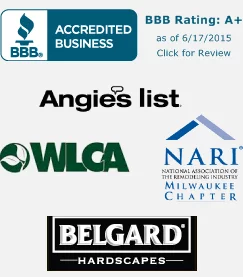Gardens are beautiful to look act and a great way to connect with nature. Gardens that are pollinator-friendly take this one step further, creating a place for bees, birds, and insects to thrive.
Bees are vital to our ecosystem and a garden that is bee-friendly benefits both the bees and the gardener. Bee-friendly gardens help prevent colony collapse disorder, which is the phenomenon that is leading to a rapid decline in honeybee populations. Research has found that areas with more gardens have larger and more diverse bee populations.
Bee-friendly gardens also attract predator insects. These predatory insects are valuable because they keep pest insects from harming your plants. This, in turn, helps increase the quantity and quality of your fruits and vegetables.
How To Create a Bee-Friendly Garden
To create your own bee-friendly garden, be sure to do the following:
- Determine which bee-friendly plants will work in your garden. Consider the different pollinator plants that thrive in the Midwest region (Midwest Pollinator Plants List).
- Whatever you choose to plant, plant a lot of them. It is recommended that you have at least 3 x 3 feet of each plant species.
- Avoid using pesticides. Pesticides kill bees. Use compost to help develop healthy soil. Healthy soil creates healthy plants.
- Plan out what you plant. You want something blooming for as many months as possible. Native bees and honeybees need forage during the entire growing season.
- Create a habitat for nesting. Seventy percent of native bees are ground nesting. Leave some soil bare for these bees. You can also put up bee nesting blocks for crevice nesting bees.
- Provide a cover. Bees need a break from the sun and heat. Coleus is a great plant for bees to rest under between feedings and flying.
- Place shallow dishes of water in and around your garden. If you have a fountain, place stones or rocks inside it that bees can sit on while they rehydrate. Bees need water just as much as we do.
- Plant bee balm. Bee balm is a hardy perennial that looks beautiful while attracting various types of bees to your garden.
- Keep color in mind. Bees love blue, purple, and yellow plants and flowers. Keep these colors in mind when planning out your garden.
- Plant flowering fruits and vegetables. Tomatoes, zucchini, strawberries, and apples are a great source of pollen for your garden visitors.
- Be mindful of bees. If you have small children, teach them not to kill or swat at bees. If you are respectful of bees’ space, they will be respectful of yours.
The success of bee-friendly plants varies according to region, but some common choices that thrive in the Midwest include sunflowers, poppies, lavender, sages, and goldenrod. Having a bee-friendly garden is a great way to both give back to nature and have a prospering garden. For more information on how to create a bee-friendly garden, contact our team here.



